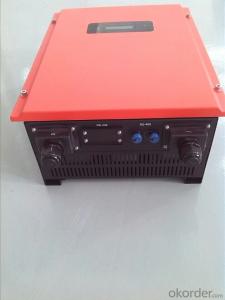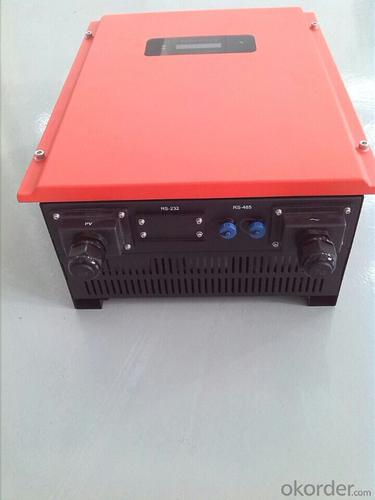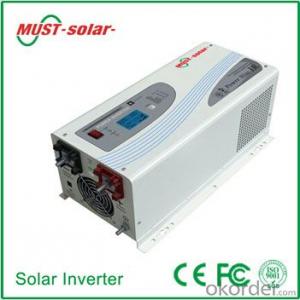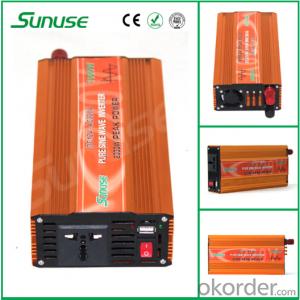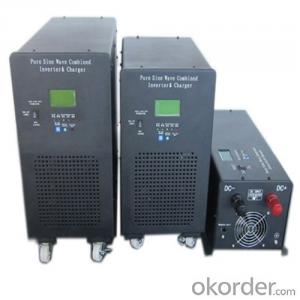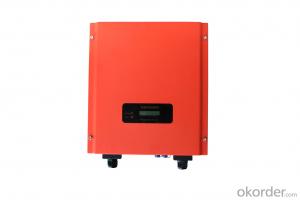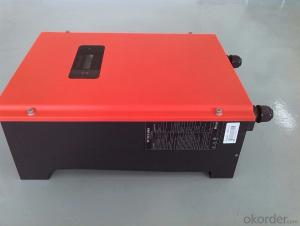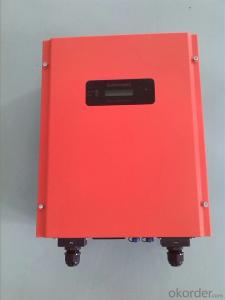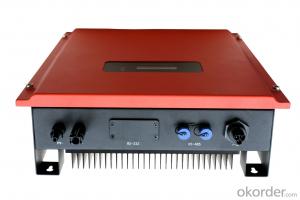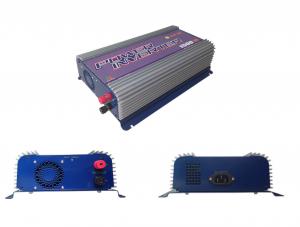Grid Tie Solar Inverter Sunteams 1500-3000(US)
- Loading Port:
- China Main Port
- Payment Terms:
- TT OR LC
- Min Order Qty:
- -
- Supply Capability:
- -
OKorder Service Pledge
Quality Product, Order Online Tracking, Timely Delivery
OKorder Financial Service
Credit Rating, Credit Services, Credit Purchasing
You Might Also Like
The Sunteams 1500 ~5000 series is applicable to various rooftops and small scale photovoltaic grid-connected power plants. Their nominal output powers are 1.5 kW, 2 kW, 2.5 kW,
3 kW, 3.6 kW, 4 kW and 5kW respectively.
This series is transformerless and has a wide range of MPPT input voltage. Its maximum conversion efficiency and MPPT tracking accuracy reach 97.6 % and 99.5 % respectively. The maximum DC voltage reaches 550 V. Its multilingual LCD display facilitates easy operation. It has waterproof direct plug-in terminals. It has overvoltage, islanding, short-circuit, overloading and overheating protection functions. Its IP65 protection degree will ensure it runs well in various tough environments.
These units are available with or without wirebox.
UL certified
■ For countries with UL certification (UL 1741 / IEEE 1547)
■ For countries with UL certification (UL 1741 / IEEE 1547)
Efficient
■ The CEC efficiency of the inverter can reach 95.0 %-97.5 %
■ Transformerless desi
■ The CEC efficiency of the inverter can reach 95.0 %-97.5 %
■ Transformerless desi
Simple
■ ‘Plug and play’connection for easy installation and maintenance
■ Designed for hanging with simple and easy installation
■ Fanless cooling concept
■ ‘Plug and play’connection for easy installation and maintenance
■ Designed for hanging with simple and easy installation
■ Fanless cooling concept
Communicative
■ RS232/RS485 interfaces as standard
■ Optional Bluetooth technology
■ RS232/RS485 interfaces as standard
■ Optional Bluetooth technology
- Q: How do you choose the right voltage rating for a solar inverter?
- When choosing the right voltage rating for a solar inverter, it is important to consider a few factors. Firstly, you should check the voltage rating of your solar panels to ensure compatibility with the inverter. Secondly, consider your system's voltage requirements, including the voltage of your battery bank or grid connection. Lastly, take into account the distance between your inverter and the solar panels, as voltage drop can occur over long distances. By considering these factors, you can select a solar inverter with the appropriate voltage rating for optimal performance and efficiency.
- Q: How does a solar inverter handle variations in ambient temperature?
- A solar inverter is designed to handle variations in ambient temperature by incorporating temperature compensation algorithms. These algorithms adjust the inverter's performance parameters, such as voltage and frequency, based on temperature measurements. This ensures that the inverter operates optimally and efficiently across a wide range of temperature conditions, maintaining stable and reliable power conversion from the solar panels.
- Q: How efficient are solar inverters?
- Solar inverters are highly efficient, with most modern models achieving efficiency levels above 95%. This means that they can convert a large majority of the direct current (DC) electricity generated by solar panels into alternating current (AC) electricity for use in homes or businesses. The high efficiency of solar inverters helps maximize the overall energy output and financial benefits of solar power systems.
- Q: What are the safety certifications to look for in a solar inverter?
- When looking for safety certifications in a solar inverter, some important ones to consider include the UL 1741 certification, which ensures compliance with safety standards for grid-connected inverters, and the IEC 62109 certification, which verifies the safety of the inverter in regards to electrical and fire hazards. Additionally, certifications such as CE, TÜV, and ETL mark can also indicate compliance with safety standards and regulations.
- Q: How does a solar inverter affect the overall aesthetics of a solar installation?
- A solar inverter does not have a direct impact on the overall aesthetics of a solar installation as it is typically installed indoors or in a separate enclosure. The inverter's primary function is to convert the DC electricity generated by the solar panels into usable AC electricity for consumption. However, it is important to choose an inverter that is compatible with the installation's design and size to ensure efficient operation and minimal visual impact.
- Q: What is the role of a maximum power point tracker in a solar inverter?
- The role of a maximum power point tracker (MPPT) in a solar inverter is to ensure that the solar panels are operating at their maximum power output. The MPPT continuously monitors the voltage and current of the solar panels and adjusts the operating conditions to find and maintain the maximum power point. This optimization helps to maximize the efficiency and overall energy generation of the solar system.
- Q: Can a solar inverter be used in a solar-powered air conditioning system?
- Yes, a solar inverter can be used in a solar-powered air conditioning system. The solar inverter is responsible for converting the DC power generated by solar panels into usable AC power for appliances, including air conditioners. By utilizing a solar inverter, the solar-powered air conditioning system can effectively harness solar energy to cool spaces while minimizing reliance on traditional energy sources.
- Q: Are there any fire safety concerns associated with solar inverters?
- Yes, there are some fire safety concerns associated with solar inverters. While solar inverters are generally safe and undergo rigorous testing to meet safety standards, there have been rare instances of fires caused by faulty inverters or improper installation. It is crucial to ensure that inverters are installed by qualified professionals following manufacturer guidelines and regularly inspected for any signs of damage or malfunction. Additionally, proper maintenance and monitoring of the inverter system can help mitigate any potential fire risks.
- Q: Can a solar inverter be used with different types of tracking algorithms?
- Yes, a solar inverter can be used with different types of tracking algorithms. The primary function of a solar inverter is to convert the direct current (DC) generated by solar panels into alternating current (AC) that can be used in homes or businesses. Tracking algorithms, on the other hand, are responsible for optimizing the performance of solar panels by adjusting their orientation and tilt angles to maximize sunlight exposure. Solar inverters can integrate with various tracking algorithms to ensure efficient operation and improve energy generation.
- Q: How does a solar inverter handle sudden changes in solar irradiation?
- A solar inverter handles sudden changes in solar irradiation by continuously monitoring the incoming solar energy and adjusting its output accordingly. When there is a sudden increase in solar irradiation, the inverter quickly ramps up its power conversion to match the higher energy input. Similarly, when there is a sudden decrease in solar irradiation, the inverter reduces its power conversion to align with the lower energy input. This dynamic response ensures that the inverter efficiently converts the available solar energy into usable electricity, maintaining a stable power output despite fluctuations in solar irradiation.
Send your message to us
Grid Tie Solar Inverter Sunteams 1500-3000(US)
- Loading Port:
- China Main Port
- Payment Terms:
- TT OR LC
- Min Order Qty:
- -
- Supply Capability:
- -
OKorder Service Pledge
Quality Product, Order Online Tracking, Timely Delivery
OKorder Financial Service
Credit Rating, Credit Services, Credit Purchasing
Similar products
Hot products
Hot Searches
Related keywords
